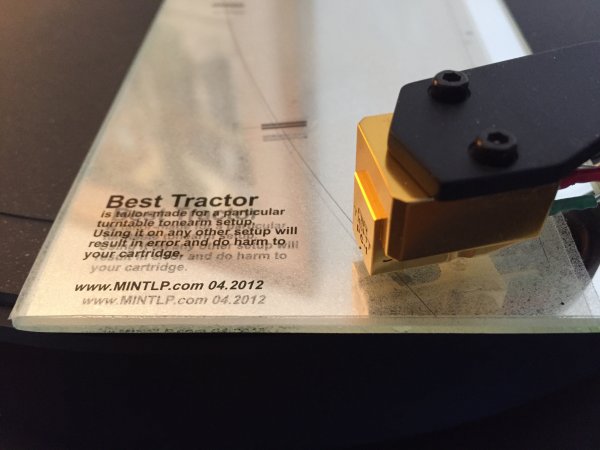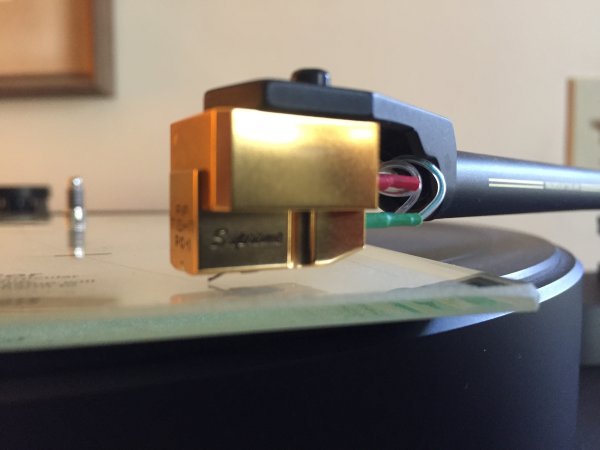Yesterday Peter and I listened to chamber music with strings on his system. There was one LPs where both he and I agreed that the VTA should be adjusted from the nominal setting that he had written down from earlier listening (it was from the MSL cartridge, and the AirTight Supreme that we listened to might require a slightly different angle). The LP was Mozart string quintets with the Grumiaux Trio and guests (Philips). We listened to the early quintet KV 174.
We first listened at the nominal setting. It sounded quite good, but there was a problem with a discontinuity of the high register of the violins from the rest. It sounded a bit 'papery', brittle and thin, whereas the basic string tone did not have that character. There were also slight timbral issues with the cello. It was enjoyable enough, but by the third movement the brittleness in the violins' high register had become a bit annoying to me. Then Peter lowered the arm from 17 mm height to 16.5 mm, a 1/10th of a degree shift in SRA. According to his table of measurements above, the VTF would be changed by 0.5 % or less.
The result: the brittleness and 'papery' sound in the high register of the violins was gone, and the coherence of sound from low to high register of these instruments was much better. Overall the sound had more weight, and also the cello sounded more realistic. Oddly enough, the music also clearly sounded louder, something we both noticed independently. It just seemed as if the needle was tracking the groove better. In the development section of the first movement there is a dynamic upward swoop, led by cello and viola, and accentuated by the violins in low register. It had considerably more heft, weight and dynamics than before. Peter commented that transients in the music were better, and we both clearly heard more micro-texture from the friction of the bow on the strings. Overall, involvement became more intense and the sound more convincing, more like the real thing. It was clear to both of us: The differences were real, they were not subtle, and they were for the better.
Another LP that we listened to was the Janaki Trio debut; we listened to the Penderecki string trio. The sound was enjoyable, but a bit dark in my view. I also missed some resolution, and the sound seemed a bit diffuse. Peter raised the arm from 17.5 to 18mm. The result: a sound that was less dark, seemed more transparent, had more resolution of string texture, and was more direct, as I also would expect from my CD of the same recording which sounds more direct on my system than other more spatially accentuated recordings. The sound was also more incisive. Again an overall improvement.
It is clear that these two LPs, of different thickness, required different VTA settings, one with 16.5 mm arm height, the other with 18 mm arm height. If you would play them on a system where VTA is not adjusted by individual LPs, one will sound right and the other will sound off, or both will sound off. It does not matter how sophisticated and expensive the turntable set-up may be, if no adjustment is made between the LPs, this will be the result that would be expected.
LIke Peter, I am strongly convinced after experiences like this recent one, but also others before that, that VTA adjustment is necessary between LPs. If I would acquire a vinyl set-up, I certainly would follow Peter's example. You just leave too much potential resolution, realism of tone, and enjoyment off the table otherwise.






